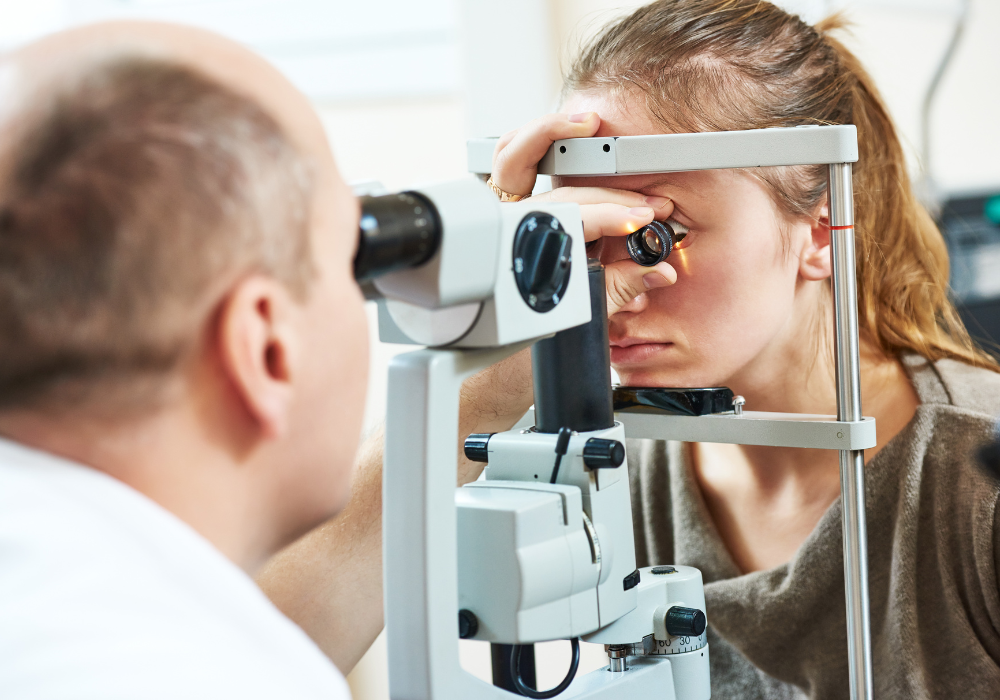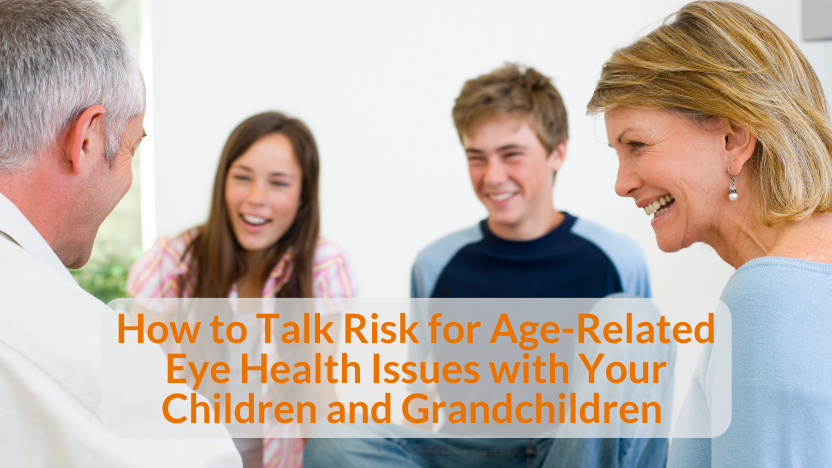Explaining Age-Related Eye Health Risk to Kids and Grandkids
Posted by EyePromise on Apr 6th 2023
Age-related eye health issues are becoming more and more common as the population ages. In fact, it’s estimated that nearly 20 million people in the U.S. have some degree of age-related eye health issues. The biggest risk factor for getting age-related eye health issues is age, but the second most prominent risk factor is family history. If you have a history of age-related eye health issues in your family at all (you, your mom, your grandpa, your great, great aunt, etc.), the younger generations in your family are at risk, too. Here’s how you can help them understand and mitigate their risks for age-related eye health issues.
Understand the Risks
First, kids and grandkids should be old enough to where this conversation will resonate with them (think mid-teens and later). Next, they need to know which risk factors they currently have and what they can do about them. The risk factors for age-related eye health issues are broken down into two categories:
Non-Modifiable Risk Factors for Age-Related Eye Health Issues
Per the name, these risk factors cannot be changed, but it’s important to know which can impact you, your kids, or grandkids. Two of these will look familiar:
- Age
- Family history
- Light skin/eyes
- Female
Modifiable Risk Factors for Age-Related Eye Health Issues
Perhaps even more important to know than the non-modifiable risk factors, these are the risk factors that can be controlled. If you, your kids, or your grandchildren have any of the above, it’s imperative to get the below under control.
- Current or previous smoker – if you currently or have ever smoked, your risk for age-related eye health issues increases. If you haven’t already, the best way to mitigate this risk is to stop smoking.
- High BMI – a high body mass index (BMI) is also a critical risk factor for developing age-related eye health issues. Losing weight can help reduce this risk.
- Low MPOD – the macula is what’s affected by age-related eye health issues, and macular pigment optical density (MPOD) is a numerical value given to the amount of protection your eye has for your macula. A low MPOD means you’re at a higher risk for macular damage, so increasing intake of the nutrients that compose it can help increase your MPOD. Learn more.
- Low fruit and vegetable intake – nutrition heavily impacts vision and eye health. Increasing your daily intake of fruits and vegetables can help reduce your risk of age-related eye health as well as a number of other health issues. Follow the CDC’s recommendation of 1.5-2 cups of fruit and 2-3 cups of vegetables every day.
Tell Them Your Story
It can be hard to imagine having age-related eye health issues, especially when you’re young. However, age-related eye health issues are a permanent problem, meaning that once you have them, there’s no going back. Often times, once you start seeing the signs and/or symptoms of age-related eye health issues, it’s too late. Telling children and grandchildren your story (or whomever has it in your family’s story) can help them see this seemingly far-off eye health issue through a more realistic lens. This helps them take the previous suggestions more seriously.
Next Steps

First, you need to understand the level of risk you’re starting with. Then, you should make a plan to begin mitigating any of the modifiable risk factors you may have. Your plan should also include an eye doctor’s appointment, as they can do in-depth imaging to determine if there are any early signs of age-related eye health issues, and the earlier it’s detected, the better the outcomes.

